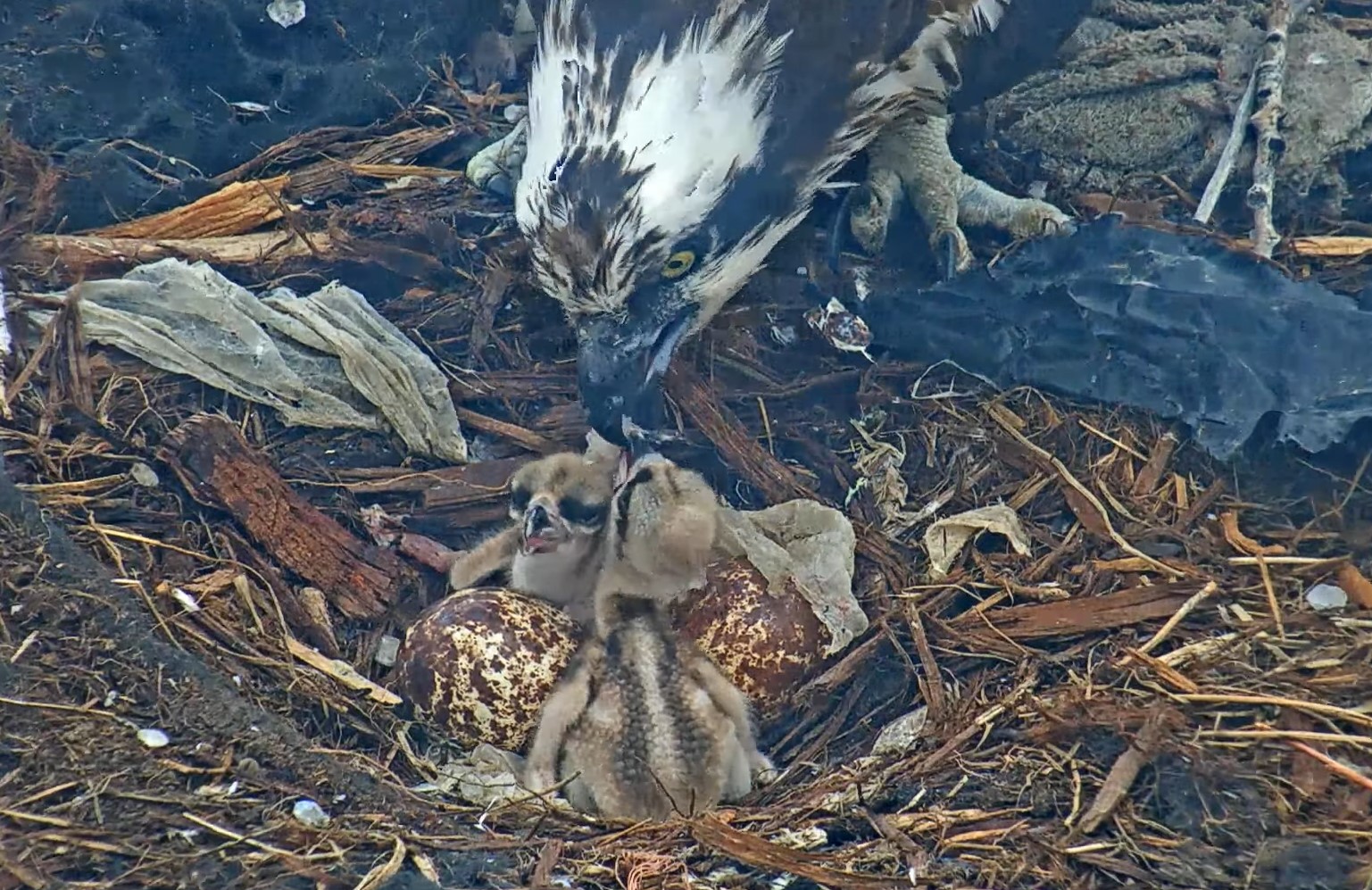
The osprey pair nesting near the Boulder County Fairgrounds has successfully hatched three out of four eggs this week, with osprey camera viewers eagerly watching to see if the last egg will hatch this weekend.
Four chicks would be a record since Boulder County first installed the webcam in 2012 to view the ospreys that kept returning to the nest near Cattail Pond.
“They’re so cute when they first hatch,” said Nik Brockman, Boulder County Parks Open Space web administrator. “It’s definitely a fun thing to watch. It would be great to see the fourth egg hatch. We’re very optimistic that this will be another successful season for this nest.”
Ospreys are raptors that solely eat fish. They migrate to Colorado in early spring to have their chicks and migrate back in the fall. Though there’s no way to know for sure, Central America or South America are the most likely migration locations.
Each year, ospreys return to the same nest to lay their eggs. Mom has returned to this nest since 2013. The previous dad, who showed up in 2020, didn’t make it back this spring and was replaced by the current dad. Ospreys often mate for life, so a no show usually means the osprey died.
This season, the female osprey’s four eggs were laid one at a time on April 16, April 19, April 21 and April 24. The first hatched Tuesday, the second Wednesday and the third Thursday.
Jasmine Finks, one of two volunteer moderators for the site, said anywhere from 40% to 55% hatched is a good rate — last season, just one of three eggs hatched and the chick went on to “fledge,” or fly off the nest. Ospreys typically lay two to four eggs each season, though three is the average.
“Everyone is ecstatic in seeing the cute little chick bobbleheads this season,” she said.
Finks said this season’s new dad appears to be young and inexperienced, based on his initially clumsy mating attempts. That inexperience makes the nest’s success notable, she said, given that the first few years with a new mate can be rough. New dad, she added, is proving both attentive and a bountiful fish provider. The nest has the added advantages of an experienced mom and a prime location next to well stocked ponds.
“It was really sweet to see the dad feed his first chick,” Finks said. “He really looked surprised to see this thing in his nest. We’re hoping new dad does really well and brings in a lot of fish.”
The osprey page on Boulder County’s website is one of the county’s most visited pages. Brockman said the county hasn’t kept track of views over the years but that it’s been consistently popular. The page also boasts a very active chat, with around 84,000 comments.
Those following along as the eggs hatch have commented on their delight.
“That few minutes of zoomed in sleepy action is so precious with the two new O’s!,” one commented on Wednesday.
Another on Thursday said, “Yay! There’s our #3! Still adjusting to this big new outside world.”
A third commenter added, “A BIG THANK YOU for those in charge of the camera controls allowing us to, once again, enjoy the best nature has to offer.”
Commenters often become emotionally invested in the success of the nest, Brockman said, and may sometimes have a hard time watching nature play out. Boulder County has a firm “no intervention policy,” except in very specific circumstances. One common concern is trash in the nest. The ospreys bring in cloth, plastic and even baling twine as nesting materials.
Brockman said baling twine is the biggest threat, prompting the county to create a public service announcement in the spring to urge farmers to dispose of the twine that’s used around bales of hay and alfalfa.
“That color and texture is very attractive to ospreys,” he said. “They can get caught in it. We see ospreys get tangled and have to be rescued or even die.”
To view the osprey camera, visit bouldercounty.gov/open-space/management/osprey-camera/.


 PREVIOUS ARTICLE
PREVIOUS ARTICLE
